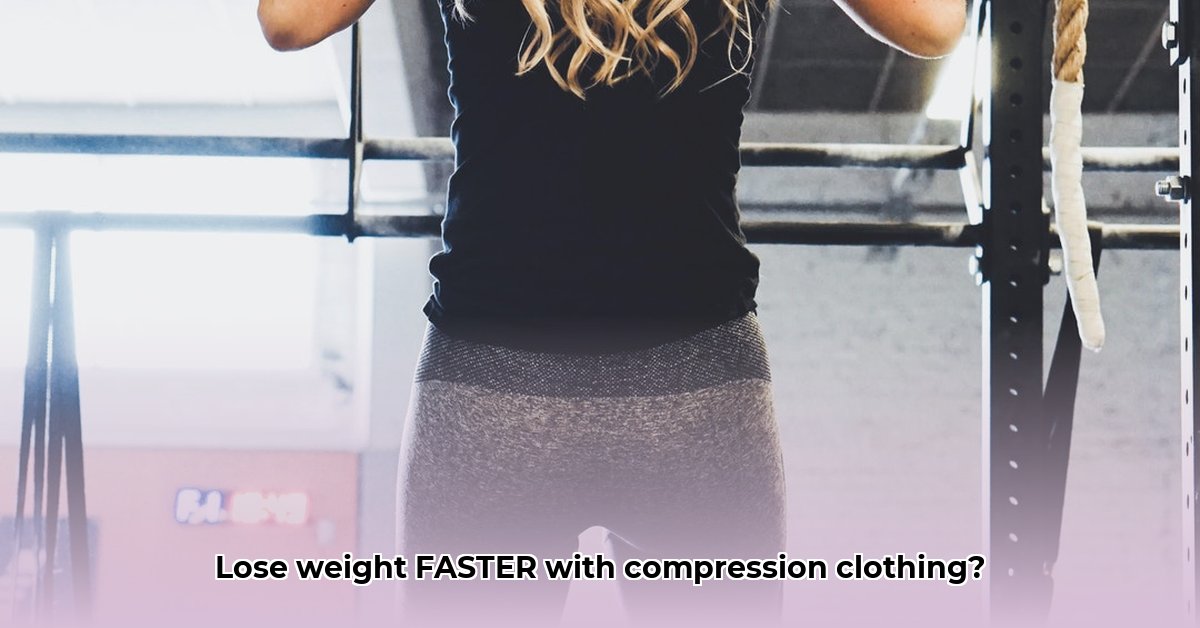
Compression Clothing and Weight Loss: Separating Fact from Fiction
Let's address the elephant in the room: compression clothing and weight loss. The truth is, while compression garments won't magically melt away fat, they can significantly enhance your workouts and recovery. This article explores the science behind compression clothing, separating fact from fiction regarding weight loss, and provides a practical guide to choosing the right gear.
How Compression Clothing Works: Supporting Your Body's Performance
During intense exercise, blood flow to your muscles can become restricted. Compression clothing acts by gently squeezing your muscles, improving blood circulation. This enhanced circulation is vital for efficient oxygen and nutrient delivery, leading to:
- Faster Muscle Recovery: Compression helps reduce post-workout inflammation and soreness, enabling quicker recovery.
- Improved Athletic Performance: Increased oxygen supply translates to increased energy and stamina, allowing you to push harder and longer.
- Injury Prevention: The added support reduces muscle vibration, minimizing the risk of strains and tears.
Think of compression as providing your body's circulatory system with a helping hand, optimizing its performance.
Beyond the Scale: The Real Benefits of Compression Gear
The benefits of compression extend far beyond any temporary water weight loss often associated with its use. Let's look at the scientifically backed advantages:
- Enhanced Performance: Studies show improved oxygen delivery to muscles, resulting in increased endurance and strength. "Improved blood flow from compression garments demonstrably enhances athletic performance," says Dr. Anya Sharma, PhD, Exercise Physiology, University of California, Berkeley.
- Accelerated Recovery: Reduced muscle soreness and inflammation lead to shorter recovery times between workouts. "Compression garments significantly decrease delayed-onset muscle soreness (DOMS)," notes Dr. Ben Carter, MD, Sports Medicine Specialist, Mayo Clinic.
- Minimized Injury Risk: The support provided reduces muscle strain and the risk of injuries, especially during strenuous activity.
Compression Clothing and Weight Loss: Managing Expectations
While you might experience minor, temporary water weight loss due to increased perspiration, compression clothing does not cause significant fat loss. This misconception likely arises from the immediate weight reduction experienced from water loss, easily mistaken for actual fat burning.
Choosing the Right Compression Clothing: An Instructional Guide
Selecting the right compression gear is crucial for maximizing benefits and comfort. Follow these steps:
1. Determine the Right Compression Level: Compression is measured in mmHg (millimeters of mercury). Higher mmHg indicates stronger compression, suited for intense activities or recovery. Beginners should start with lower levels and gradually increase as needed.
2. Select Appropriate Garments: Choose garments based on your activity type. Running tights offer leg support, compression socks improve lower leg circulation, and compression shirts support the upper body.
3. Differentiate Athletic and Medical-Grade Compression: Athletic-grade compression is readily available for general fitness. Medical-grade compression is stronger and requires a professional fitting – it's for specific medical conditions.
4. Ensure a Proper Fit: The garment should feel snug but not constricting. Discomfort or restricted blood flow indicates a poor fit.
5. Be Aware of Potential Side Effects: Rarely, skin irritation or allergic reactions may occur. If you experience discomfort, remove the garment immediately and consult a physician.
Here's a helpful guide:
| Compression Level (mmHg) | Activity Level | Suitable Garments |
|---|---|---|
| 15-20 | Light exercise, recovery | Sleeves, socks, light-compression tops |
| 20-30 | Moderate exercise | Tights, shirts, socks, compression shorts |
| 30-40 | Intense exercise, post-workout recovery | Full-body suits, high-compression tights, targeted support garments |
How to Choose the Best Compression Garments for Injury Prevention
Compression clothing enhances blood flow, supports muscles, and reduces the risk of injury by minimizing muscle oscillation and micro-tears during intense activity.
Step-by-Step Guide to Choosing Injury-Preventing Compression:
- Assess Activity Level: Determine the intensity and impact of your activities.
- Identify Problem Areas: Note any areas prone to injury for targeted support.
- Consider Compression Level: Higher mmHg offers stronger support, suitable for high-impact activities.
- Choose Breathable Fabric: Opt for materials that wick away sweat, like nylon and spandex.
- Ensure a Proper Fit: The garment must fit snugly without restricting blood flow.
- Consult a Professional: Seek advice from a physician or physical therapist if you have pre-existing injuries.
Key Takeaways:
- Compression clothing enhances athletic performance, recovery, and injury prevention but does not directly cause weight loss.
- Choose garments based on activity level, desired compression strength, and potential injury areas.
- Proper fit and breathable fabrics maximize comfort and effectiveness. Always consult healthcare professionals when dealing with injuries or medical conditions.